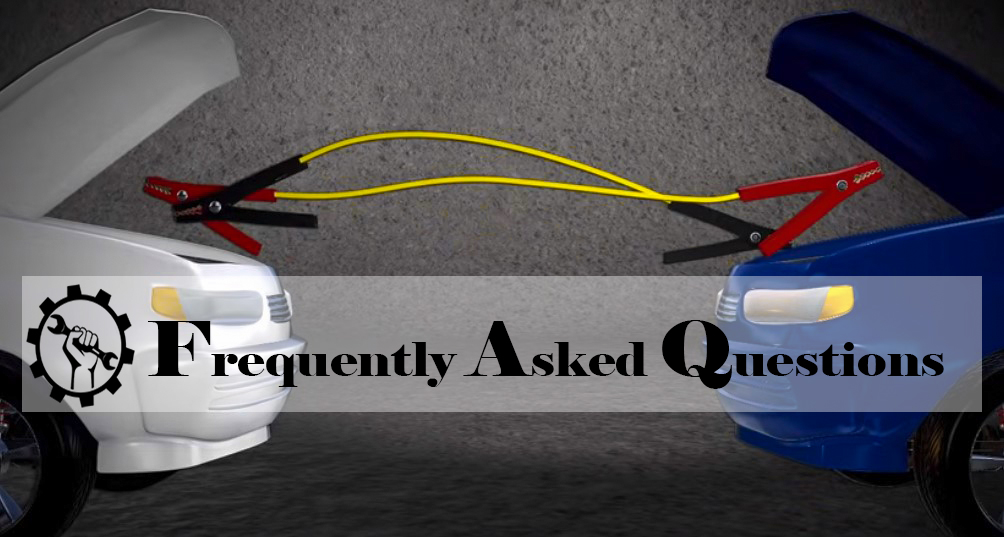Jumper cables, booster cables, or jump leads are a lifesaver when your car battery deceives you out of no way due to lights left turned on, cold weather, or an old battery. They are a pair of well-capacity insulated wires with alligator clips on both ends to connect a
faulty device/vehicle to an auxiliary power source or another car or device with different batteries or the same system voltage. So, if you own a vehicle, it is necessary to have a pair of working jumper cables and know how to use them. The jumper cables are handy and reliable enough to make you jump out of any striking emergency. Of course, we never want to stand stranded on the roadside, broken down, and looking for help.
There are different types of jumper cables available in the market and don’t misinterpret that they all work the same. Know that it is essential equipment that should not spare anyway. While purchasing a durable and reliable jumper cable, you should look for;
- The quality of material and cable gauge
- Type of cable insulation
- Clamps style
- Clamps warranty
- Storage method
- And, instruction manual
Types of Jumper Cables
The usability of a jumper cable depends on the type of your vehicle.
The jumper cables are rated by 3 factors;
- Total Amperage load
- Metallic Composition
- The gauge of the Wiring (the lower the gauge is; heavy-duty it is)
The jumper cables’ main difference is gauge rating, material, gauge, and metal composition, and cost. Select the one that is durable and good in quality.
Simple Process to Jumper Cables to Start a Car

Using jumper cables is no rocket science, but it is mandatory to learn it properly before getting your head into the hood of your vehicle and ending up doing a disaster.
Identify the Positive and Negative Terminals of Battery
You first need to identify the negative and positive terminal of your car’s battery. Both are marked with + (positive) and – (negative) signs.
Attach the Cables
If you look at your jumper cables, one cable is black, and the other is red. These colors indicate which cable should be placed where and allow the users to connect the cables to the correct terminal.
- If you are using another vehicle to jump-start your car, attach one end of the red cable with the positive terminal of a dead battery, and the other should be connected to the positive (+) terminal of a running vehicle
- In contrast, one end of the black cable should be connected to the working battery’s negative (_) terminal and the other with the unpainted part of metal stationery of the dead battery. Do not attach the clamp with the dead battery’s negative terminal as it increases the risk of explosion or fire.
- We assured that the clamps do not touch any other part of the engine but correct the target only.
Start the Working Vehicle
Now start the vehicle with a working battery. Let the engine run for a couple of minutes and allow the current to flow from the working battery to the dead one.
Try to start the faulty vehicle. Do not prolong the starting session; hold for a few seconds and try again until the engine of the dead battery jump starts. If your car is not starting anyway, it might have a more significant issue and cannot be jump-started. Call your mechanic or take your car to him.
Disconnect Jumper Cables
Disconnect the negative clamp first of the vehicle with the dead battery and then the working battery.
Then disconnect the red cable from the working battery and the one that received the jump start.
Moreover, you can jump-start your vehicle utilizing a portable jump starter or another automobile. No matter which way you opt for, make sure the supporting tools or vehicles are off. If your car doesn’t start, consult an expert mechanic and avoid experimenting with your vehicle.
How to start a car with a dead battery without another car?
Besides jump-starting your vehicle’s dead battery, you can also use jump boxes, battery packs, or portable jump starters. Whatever tool you use, do not forget to read the instructions on the manual, as all of them have precise instructions for storing and using.
Identify the negative and Positive Cables.
Mostly clamps are permanently attached with the portable jump starting kits, and you need to attach the other end to the correct terminals of a dead battery. If they are not connected to the tool, identify the negative (black) and positive (red) cables and attach them to the tool.
Attach The Cable with The Dead Battery
Attach the red cable with the positive (+) terminal of the dead battery and other ends with the tool (if it is not already attached). Now, attach the black cable with the car’s chassis or unpainted metal piece in the engine. Do not attach the negative cable with _ terminal of a dead battery.
Remove the Cable
Suppose your car jump starts instantly, well and good. Otherwise, let the battery pack cool down for some time and then try again. To disconnect the cable, first, remove the black cable and then the red one from the battery.
Difference Between Jumper Cables and Booster Cables

Jumper cables are booster cables, jump cables, or jump leads. They all are the same and are used to boost a dead battery from another power source.
How to jump-start a car with a battery pack?

A battery pack is a portable device in the form of a small box. The device has ports where cables can be connected. Here is a step-by-step guide to jump-starting your vehicle using a battery pack.
Step 1: Connect the cables
Attach the red (positive) jumper cable with the positive terminal of the dead battery and the black (negative) cable with the car’s chassis or the unpainted piece of metal.
Step 2: Attach the other end with the battery pack
Now grab your battery pack, turn it on and attach it with the given port.
Note: Most battery packs have an LED display at the front to show the battery life and remaining battery. They are the best to choose. Check your battery pack before leaving your home for long drives or in the countryside, where it could be challenging to find help.
Step 3: Start your Car
Now start your car, and Congratulations, you are done.
Step 4: Remove the Cable
First, remove the black cable from the dead battery and remove the red cable. Detach the jumper cable from the battery pack too.
Does and Don’ts of Jump-Starting a Vehicle
Below are a few dos and don’ts of jump-starting a vehicle. Always consider them to avoid any incident.
- Always turn off the ignition in both vehicles before attaching the jumper cables.
- Always park the vehicle you are using to jump-start next to the vehicle with a dead battery to connect the cable easily.
- Always opt for a jumper cable with longer wires to easily attach it with the vehicles standing in the parking nearby.
- Identify the battery terminals and correct the cable before attaching.
- Do not attach a black jumper cable of the running battery with the battery’s negative terminal of the dead vehicle.
- Detach the negative (black) cable first from the dead battery and then the positive(Red) one.
- Do not lean over the battery of any vehicle.
- Do not try to jump-start a cracked or leaked battery.
- Do not jump-start a battery if liquids are frozen.
- Do not try to jump-start your vehicle near fragile material.
- Ask for someone’s help to attach the other ends of the jumper cables while you are connecting one.
FAQ

Why should we not attach the negative clamps to the dead battery’s negative terminal?
Attaching the negative clamp with the dead battery’s negative terminal can result in a spark and even an explosion in the worst cases.
Can you jump-start a completely dead car?
No, a completely dead battery is not vulnerable to a jump start.
Can you take off jumper cables when the vehicle starts?
Yes, you can take off the jumper cable once the car with a dead battery is started. Remove the negative cable first.
How to attach jumper cables?
Attach the positive (red) jumper cable with the dead battery and the other end with the running battery. Now, attach the negative (black) cable with the unpainted engine or chassis of the car and the other end with the running/working battery.
Finishing Touch
Jumper cables are a must-have piece of equipment. They can be your best subordinate in case of emergency. Further, never compromise on the quality of the cables while purchasing them. In case you are not pro in jump-starting, seek help to avoid any disaster. Also, attach the clips with care to avoid any mishap.
This was all from us on how to use jumper cables to jump-start a dead battery. We hope this guide was helpful for you. We are all ears to hear back from you.

As a mechanical engineer, it’s easy for David to explain the functionality of the tool. David test most of the tools before writing a review. its help him to learn something new and suggest the best product for you.





